Jeep Cherokee (XJ): Service procedures
Use following procedure if the fuel injector
rail is, or is not equipped with a fuel pressure
test port.
(1) Remove fuel fill cap.
(2) Remove fuel pump relay from Power Distribution
Center (PDC). For location of relay, refer to label
on underside of PDC cover.
(3) Start and run engine until it stalls.
(4) Attempt restarting engine until it will no
longer run.
(5) Turn ignition key to OFF position.
CAUTION: Steps 1, 2, 3 and 4 must be performed to
relieve high pressure fuel from within fuel rail. Do
not attempt to use following steps to relieve this
pressure as excessive fuel will be forced into a cylinder
chamber.
(6) Unplug connector from any fuel injector.
(7) Attach one end of a jumper wire with alligator
clips (18 gauge or smaller) to either injector terminal.
(8) Connect other end of jumper wire to positive
side of battery.
(9) Connect one end of a second jumper wire to
remaining injector terminal.
CAUTION: Powering an injector for more than a few
seconds will permanently damage the injector.
(10) Momentarily touch other end of jumper wire
to negative terminal of battery for no more than a
few seconds.
(11) Place a rag or towel below fuel line quick-connect
fitting at fuel rail.
(12) Disconnect quick-connect fitting at fuel rail.
Refer to Quick-Connect Fittings.
(13) Return fuel pump relay to PDC.
(14) One or more Diagnostic Trouble Codes (DTC's)
may have been stored in PCM memory due to fuel
pump relay removal. The DRB scan tool must be
used to erase a DTC. Also refer to Fuel Tubes/Lines/Hoses and Clamps.
Different types of quick-connect fittings are used to
attach various fuel system components, lines and
tubes. These are: a single-tab type, a two-tab type or
a plastic retainer ring type. Safety latch clips are used on certain
components/lines. Certain fittings
may require use of a special tool for disconnection. DISCONNECTING WARNING: THE FUEL SYSTEM IS UNDER A CONSTANT
PRESSURE (EVEN WITH ENGINE OFF).
BEFORE SERVICING ANY FUEL SYSTEM HOSE,
FITTING OR LINE, FUEL SYSTEM PRESSURE MUST
BE RELEASED. REFER TO FUEL SYSTEM PRESSURE
RELEASE PROCEDURE. CAUTION: The interior components (o-rings, spacers)
of some types of quick-connect fitting are not
serviced separately. If service parts are not available,
do not attempt to repair a damaged fitting or
fuel line. If repair is necessary, replace complete
fuel line assembly.
(1) Perform fuel pressure release procedure. Refer
to Fuel Pressure Release Procedure in this group.
(2) Disconnect negative battery cable from battery.
(3) Clean fitting of any foreign material before disassembly.
(4) Single-Tab Type Fitting: This type of fitting
is equipped with a single pull tab (Fig. 13). The tab
is removable. After tab is removed, quick-connect fitting
can be separated from fuel system component.
(a) Press release tab on side of fitting to release
pull tab (Fig. 14). If release tab is not pressed
prior to releasing pull tab, pull tab will be
damaged.
(b) While pressing release tab on side of fitting,
use screwdriver to pry up pull tab (Fig. 14).
(c) Raise pull tab until it separates from quickconnect
fitting (Fig. 15).
(5) Two-Tab Type Fitting: This type of fitting is
equipped with tabs located on both sides of fitting
(Fig. 16). The tabs are supplied for disconnecting
quick-connect fitting from component being serviced.
(a) To disconnect quick-connect fitting, squeeze
plastic retainer tabs (Fig. 16) against sides of
quick-connect fitting with your fingers. Tool use is
not required for removal and may damage plastic
retainer.
(b) Pull fitting from fuel system component
being serviced.
(c) The plastic retainer will remain on component
being serviced after fitting is disconnected.
The o-rings and spacer will remain in quick-connect
fitting connector body.
(6) Plastic Retainer Ring Type Fitting: This
type of fitting can be identified by the use of a fullround
plastic retainer ring (Fig. 17) usually black in
color.
1 - PULL TAB
1 - PULL TAB (a) To release fuel system component from quickconnect
fitting, firmly push fitting towards component
being serviced while firmly pushing plastic
retainer ring into fitting (Fig. 17). With plastic ring
depressed, pull fitting from component. The plastic
retainer ring must be pressed squarely
into fitting body. If this retainer is cocked
during removal, it may be difficult to disconnect
fitting. Use an open-end wrench on
shoulder of plastic retainer ring to aid in disconnection.
(b) After disconnection, plastic retainer ring will
remain with quick-connect fitting connector body
1 - FUEL TUBE OR FUEL SYSTEM COMPONENT
1 - TAB(S) (c) Inspect fitting connector body, plastic retainer
ring and fuel system component for damage.
Replace as necessary.
(7) Latch Clips: Depending on vehicle model and
engine, 2 different types of safety latch clips are used
(Fig. 18) or (Fig. 19). Type-1 is tethered to fuel line
and type-2 is not. A special tool will be necessary to
disconnect fuel line after latch clip is removed. The
latch clip may be used on certain fuel line/fuel rail
connection, or to join fuel lines together.
(a) Type 1: Pry up on latch clip with a screwdriver
(Fig. 18).
(b) Type 2: Separate and unlatch 2 small arms
on end of clip (Fig. 19) and swing away from fuel
line.
1 - FUEL TUBE
1 - TETHER STRAP (c) Slide latch clip toward fuel rail while lifting
with screwdriver.
1 - LATCH CLIP
1 - SPECIAL FUEL LINE TOOL (d) Insert special fuel line removal tool (Snap-On
number FIH 9055-1 or equivalent) into fuel line
(Fig. 20). Use tool to release locking fingers in end
of line.
(e) With special tool still inserted, pull fuel line
from fuel rail.
(f) After disconnection, locking fingers will
remain within quick-connect fitting at end of fuel
line.
(8) Disconnect quick-connect fitting from fuel system
component being serviced. CONNECTING (1) Inspect quick-connect fitting body and fuel system
component for damage. Replace as necessary.
(2) Prior to connecting quick-connect fitting to
component being serviced, check condition of fitting
and component. Clean parts with a lint-free cloth.
Lubricate with clean engine oil.
(3) Insert quick-connect fitting into fuel tube or
fuel system component until built-on stop on fuel
tube or component rests against back of fitting.
(4) Continue pushing until a click is felt.
(5) Single-tab type fitting: Push new tab down
until it locks into place in quick-connect fitting.
(6) Verify a locked condition by firmly pulling on
fuel tube and fitting (15-30 lbs.).
(7) Latch Clip Equipped: Install latch clip (snaps
into position). If latch clip will not fit, this indicates
fuel line is not properly installed to fuel
rail (or other fuel line). Recheck fuel line connection.
(8) Connect negative cable to battery.
(9) Start engine and check for leaks.Fuel system pressure release
procedure
Quick-connect fittings
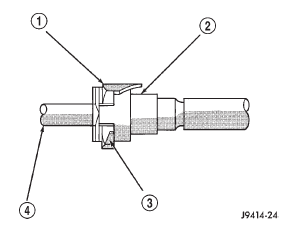
Fig. 13 Single-Tab Type Fitting
2 - QUICK-CONNECT FITTING
3 - PRESS HERE TO REMOVE PULL TAB
4 - INSERTED TUBE END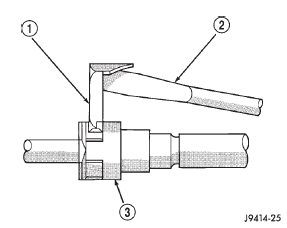
Fig. 14 Disconnecting Single-Tab Type Fitting
2 - SCREWDRIVER
3 - QUICK-CONNECT FITTING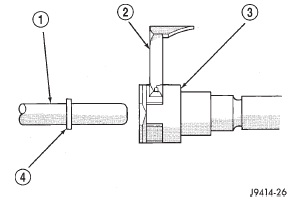
Fig. 15 Removing Pull Tab
2 - PULL TAB
3 - QUICK-CONNECT FITTING
4 - FUEL TUBE STOP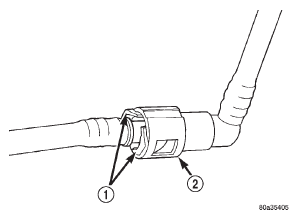
Fig. 16 Typical Two-Tab Type Quick-Connect Fitting
2 - QUICK-CONNECT FITTING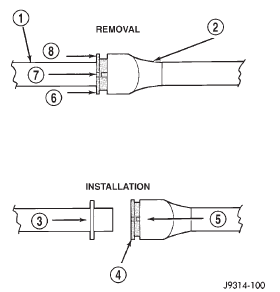
Fig. 17 Plastic Retainer Ring Type Fitting
2 - QUICK CONNECT FITTING
3 - PUSH
4 - PLASTIC RETAINER
5 - PUSH
6 - PUSH
7 - PUSH
8 - PUSH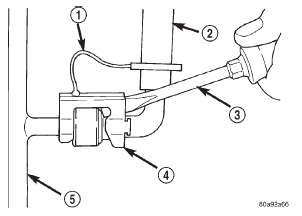
Fig. 18 Latch Clip-Type 1
2 - FUEL LINE
3 - SCREWDRIVER
4 - LATCH CLIP
5 - FUEL RAIL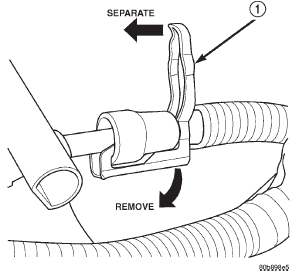
Fig. 19 Latch Clip-Type 2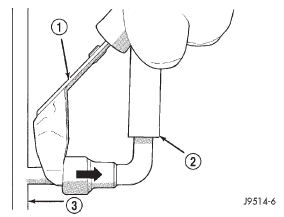
Fig. 20 Fuel Line Disconnection Using Special Tool
2 - FUEL LINE
3 - FUEL RAIL
Other materials:
Diagnosis and testing. Removal and installation
Diagnosis and testing
Low lubricant level
A low transmission lubricant level is generally the
result of a leak, inadequate lubricant fill, or an incorrect
lubricant level check.
Leaks can occur at the mating surfaces of the gear
case, intermediate plate and adaptor or extension
housing, or fr ...


